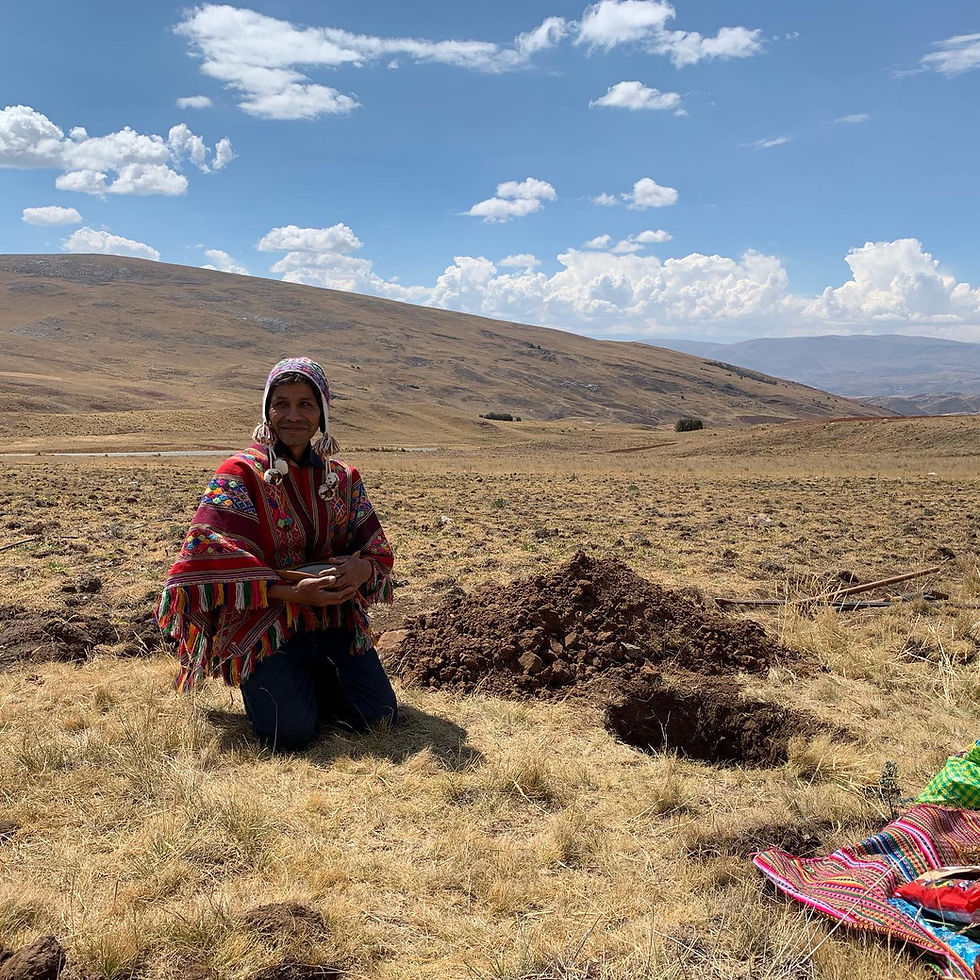A Tale Of Two Supplements - How Looks Can Be Deceiving
- Josh Boughton

- Aug 8, 2024
- 4 min read
Updated: Jan 1
It’s easy to think that two bottles of supplements with similar labels, ingredients, and amounts might be the same. One brand might cost $19.99, the other $44.99, and you might say, "Well, I should save a few bucks; they are probably close enough." We want to take you on a behind-the-scenes journey of two similar-looking products and see how much they have in common.
A Farm to table Supplement Journey
The first leg of our journey begins in the Andes mountains of Peru.

Our farmer wakes up early as the sun rises over the mountains and has some breakfast, then heads out to the maca fields to begin the harvest.
His family has farmed Maca for generations and grows it the old-fashioned way, letting each field lay fallow for ten years after the harvest because Maca takes so much out of the soil. He does not use synthetic pesticides or herbicides, trusting the earth to provide for it and farming in harmony with nature.
The Maca is hand harvested and set to sun dry for ninety days in the high mountain elevation and sunshine, as his ancestors have done for generations. A long drying process in the sun, at high altitudes, is much more expensive than quick oven drying, but it is necessary to develop high levels of beneficial compounds (such as macamides). Oven drying at low altitudes does not allow for this to happen.
After the Maca is dry, it is activated (gelatinized, no gelatin is used, it is vegan), powdered, and bagged (if you want to learn what it takes to make good Maca, click here). He performs all of this work at his facility near the farm.
He is paid directly for his crops, a good price (the farmer decides what he is paid, without haggling from the company he is selling to), far above what the brokers and middlemen pay, so he can live a life of dignity and provide for his family. In addition, the company that purchases his Maca gives a certain percentage from selling every bag to local projects that help support his community. That’s how all products should be made!

The Illusion of Sameness: When the Supplement label and the ingredients don't match
The second leg of our journey takes place in the Yunnan Mountains in China.
Maca has very particular requirements for growing correctly, and they are unique to the Junin region of Peru. Peruvian Maca is dependent on the land of the Andes, extremely rich in minerals, at an altitude of 3,900-4,300 m, and close to the Equator. Therefore, even Maca grown only a few hundred kilometers south of the Junin region lacks the nutritional value, fibrosity, size, and hardness of properly grown Maca.
Maca does not naturally grow in the climate and soil of the Yunnan Mountains, so they genetically modified it. The fields are not rotated and require large amounts of pesticides and herbicides to keep the crop from being destroyed by pests.

There is a big difference between dried Peruvian Maca and Chinese Maca (right).
After harvesting, the Maca is immediately sent to a factory, where it is oven-dried and powdered. It contains almost none of the beneficial compounds, high mold levels, and aflatoxins. The workers are paid very little, often barely above the poverty level.
The powdered Maca is then sold to brokers and middlemen, who create a fake chain of custody document and label it as Peruvian Maca (check out the honey episode of the Netflix show Rotten to learn more about this type of practice). It is often cut with caramelized sugar or banana powder during the repackaging to increase profit margins further. We estimate (conservatively) that at least fifty percent of the Maca sold in Europe and the United States is Chinese, labeled as Peruvian.
This adulterated and genetically modified powder is then sold to unscrupulous companies who package it and sell it as Peruvian Maca. Many of them even come up with fake stories about the family farmers who produce it for them or have pictures of farms that have nothing to do with the Maca they are selling. People would be shocked to know just how common this is with many different types of products and ingredients. Here are a few examples (1,2,3). If you look deeply into this issue, you will find that the vast majority of this occurs due to ingredients produced in China. For example, eighty percent of fake country of origin labeling in Europe was from Chinese products.
FARM To Table supplements
The next time you see two brands selling a similar labeled product, remember they are usually anything but the same. The journey we took you on can be replicated across every supplement and ingredient category, from herbs to protein powders. That’s why we are so intent on pushing our Farm-To-Bottle Project forward. Knowing where and how your products are made is essential to making sure you get the best products for your health and that the people who produce them and the planet are well taken care of.

Supplement Support
If you have questions about the journey one of our supplements may have taken, feel free to email us at info@rooted-nutrition.com, and we would be happy to answer them!





